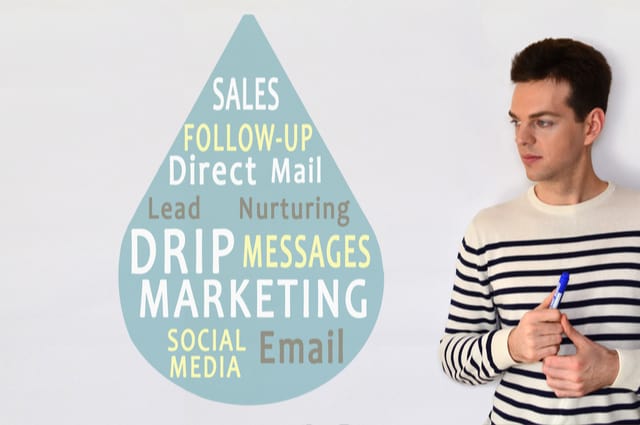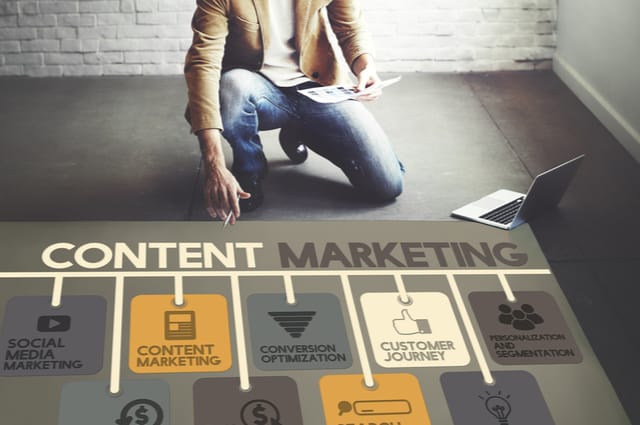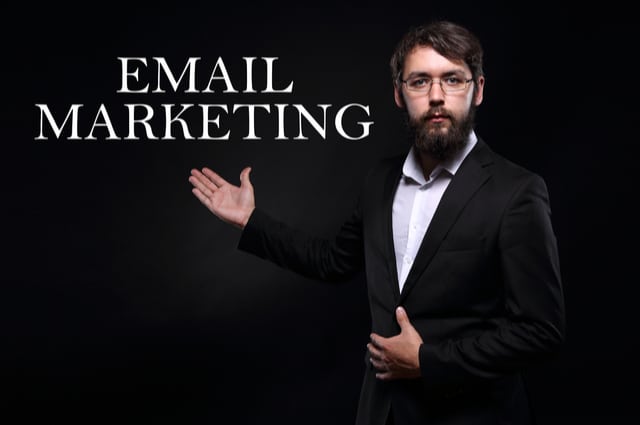Email Marketing: A Comprehensive Guide on How to Run Killer Campaigns
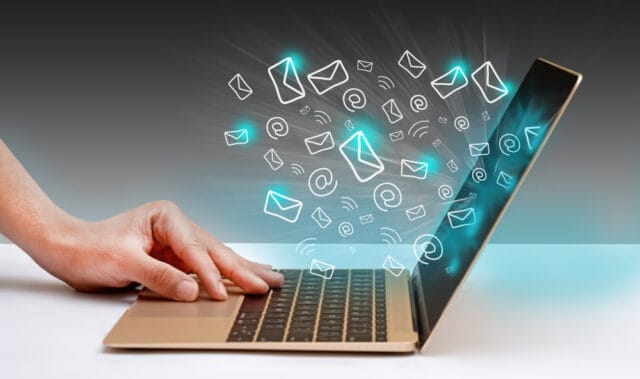
Despite the many new marketing channels that have cropped up since the first email was sent in 1971, emails still remain one of the most effective high-ROI tools in a marketer’s toolkit. Continue reading to learn everything you need to know about running successful email campaigns.
What is email marketing, and what is the difference between email marketing campaigns and email marketing?

The use of email to advertise products or services and establish relationships with new or existing consumers is known as email marketing.
Single emails are one-time emails, such as promos or emails, while campaigns are a sequence of emails that take your subscribers on a trip.
It’s a series of pre-written emails that are sent out in response to specific consumer events.
Customers may get multiple emails as a result of email marketing; however, this is dependent on the customer’s activity.
Email campaigns could be used to inform clients about new offerings, goods, and offers, as well as market company information.
If done right, it can impact your top line very strongly. A good email marketing strategy can also help increase engagement with your customers, help increase recall, build a community around your product, and soft-sell your services.
Is email marketing strategy still as effective?
With the rise of social media and general email fatigue, many professionals have prophesied the death of email and predicted that it would be replaced with project management and communications tools like Slack, Asana, etc.
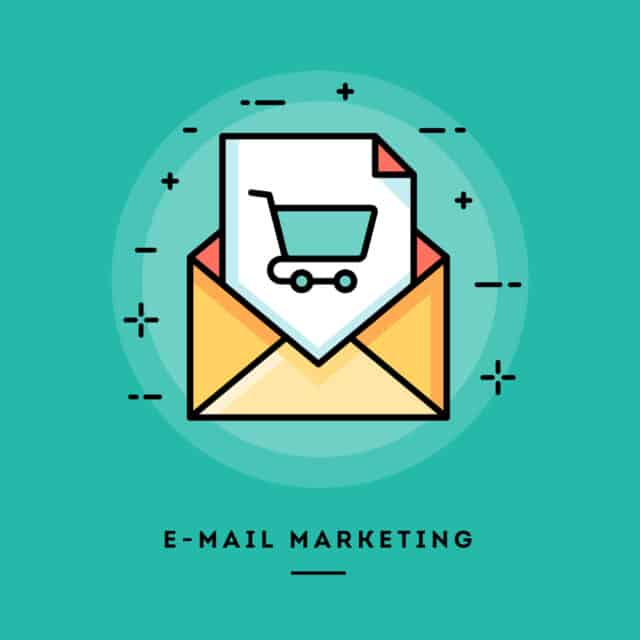
But data doesn’t lie.
According to statistics, over 90% of the population reads their email on a daily basis. In 2019, 3.9 billion people used email, which is about half of the world’s population.
According to Statista, “In 2020, approximately 306 billion emails were sent and received every day worldwide, and there were as many as 4147 Million people using email as a means for communication. In fact, the average number of emails sent every year is expected to reach more than 125 trillion by 2022.
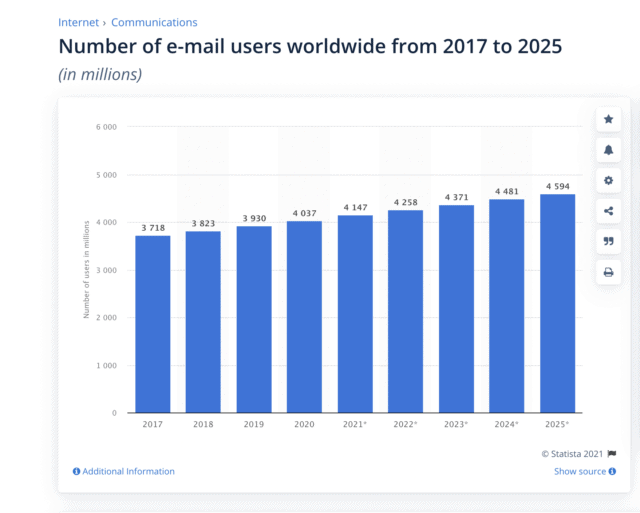
Source: Statista
Emails have a very high ROI, according to other studies. For example, as per one report, for every dollar spent on an email marketing campaign, companies saw an impact of almost $42 on their sales. That is an astonishing 4,200% return on the initial investment in your email campaign!
No wonder almost 80% of marketers and sales associates agree that email marketing leads to better consumer retention than newer marketing methods.
Advantages of Email Marketing:
Let’s dive a little deeper to understand the many benefits of email marketing:
Lead Nurturing
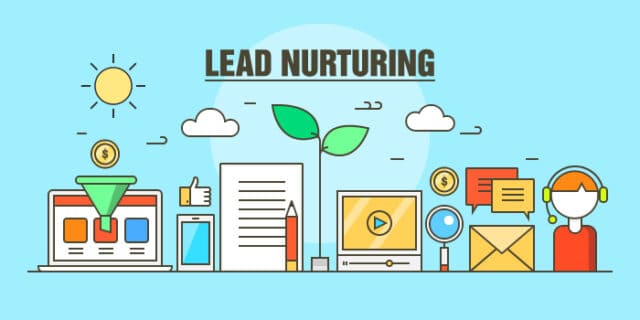
No matter what type of business you run, you will often have a list of potential customers that are engaged with you but have not yet hit “purchase.” It could be customers who added items to their cart but did not check out, or in a B2B context, a customer who took a demo but did not sign up.
How do you keep such prospects engaged? Email can be an effective tool here to gently nudge them and add value, so they don’t forget.
A simple 10% discount on items in the cart could just be the incentive they need to hit “buy.” For the customer that took a demo, a nice blog that compares your product to the alternatives in the market could help them clearly understand your value proposition.
Such email nudges can help your prospects go from the top of the funnel to the end: where they finally make the purchase decision.
Complements social media

While professionals often compare the effectiveness of email marketing with social media, we recommend implementing both. A great email marketing campaign can help build relationships with users that found you via an ad on social media, filled out a newsletter but did not purchase, as well as build an only presence.
Email marketing can also be effective in sharing promotional offers or new product launches that your followers might miss on social media.
Due to the recent rise in social media addiction and related mental health issues, a lot of people are seriously limiting their social media usage. Because of this, it might be easier to grab eyeballs via email instead of competing for previous feed real estate on social media.
Bottom line: It should not be a question of “social media OR email marketing.” Good marketers know how and when to use both for maximum synergy and impact.
Easy To Afford And Set-Up
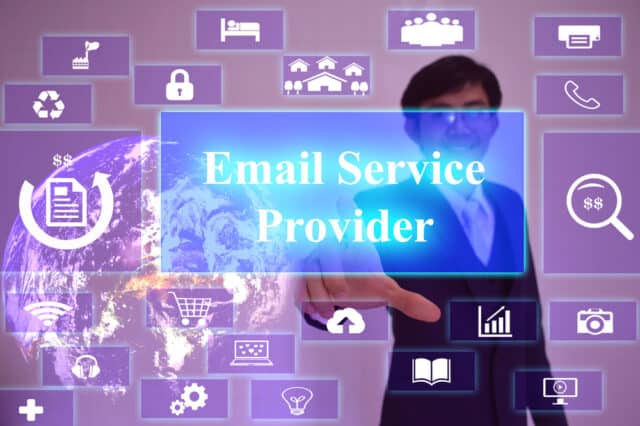
To start email marketing, you need a database and an Email Service Provider (ESP) like Mailchimp and Constant Contact, which are designed to send and manage email marketing campaigns at scale.
These ESPs often provide a free email marketing service up to certain emails (~2000-5000 per month) and have flexible options when you exceed that scale. They are often wallet-friendly and don’t require a hefty upfront investment, unlike other marketing campaigns.
It would be best if you specifically had an ESP because providers like Gmail and Yahoo are meant for individual use only. Sending mass emails from your regular email client will get your emails flagged as spam and may even get your account disabled. ESPs are designed for marketing campaigns and have additional features like A/B testing, analytics, etc., to track the effectiveness of your campaigns.
They also have pre-designed email templates so you can hit the ground running without spending a lot of time in setup.
Conveys a personal touch
Email marketing allows an option to segment your database so your messaging can be more targeted. For Valentine’s Day, for instance, you could wish to send separate offers to men and women. Or, if you run a large multinational company operating in different geographies, you might have different messaging for different countries.
This increases client loyalty while also putting faith and brand trust.
Increase in sales
Emails are transactional and, if used wisely, can direct people towards your website, thus increasing sales.
In addition, sending out emails based on customer trigger patterns can help increase engagement.
For example, if someone downloaded an ebook on how to pursue higher education abroad, you can send them an email offering a 10% discount on a consultation with an admissions consultant, nudging them closer to a sale.
Clear analytics and RoI
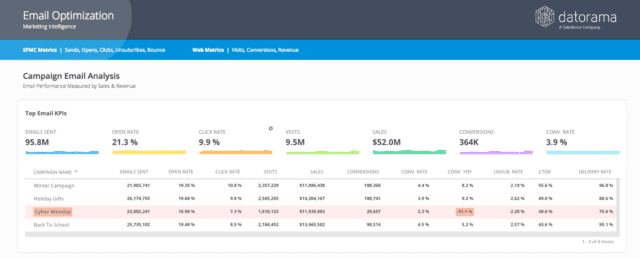
Source: Datorama
Most email service providers have a strong analytics dashboard that allows you to see open rates (how many people opened your email) and click rates (how many people clicked on the Call to Action). This way, you can clearly map the RoI and assess the effectiveness of different campaigns.
Instantaneous response
Unlike a print campaign, an email campaign can show instantaneous results. Customers can easily use the call to action button in your email to go to your website and make a purchase. Thus, it’s easy to assess the impact on your bottom line almost in real-time!
Reach and Awareness
With just over half the world’s population using emails, email marketing remains at the top of the list of channels with an extensive reach.
Everyone today has email configured on the phone, which makes it even more convenient for brands to establish a touchpoint with their audience, and help in increasing brand awareness.
It’s direct, fast, and cost-effective. What’s not to love?
Email marketing – how it has evolved
We know that email has been around since the start of the internet age. However, a lot has changed since the first commercial email was sent over the ARPANET network by Gary Thuer.
Thuer sent that email to around four hundred email addresses in 1978. Consequently, the company that he was working for had a sales boost of $13 million.
While Thuerk was reprimanded for his actions, email’s potential as a marketing tool came to light. And thus, the term ’email marketing’ saw the light of day!
Email first became an inter-company communication tool once the early internet made its way into the world in the 1980s. Today, almost 50 years later, an effective email marketing campaign is still the go-to tool to increase engagement and boost sales!
However, that doesn’t mean the techniques and methods have not evolved. Let’s take a look at some of the pivotal moments in the evolution of email marketing:
The 1990s: The email was still somewhat of a novelty, but marketers were realizing the potential of this humble tool and starting to jump on the bandwagon. Soon inboxes started being flooded with unsolicited emails, and a need was felt to regulate email marketing and protect customers from “spam.”
1998: The Data Protection Act was modified to make sure all users were given a mandatory “opt-out” option.
2003: The CAN-SPAM ACT, 2003 was introduced in the United States that first regulated the use of email in a commercial setting. It laid down some mandatory practices around ensuring header and subject lines were accurate, the location was mandatory, and opting-out was easy.
2009: Spam filters became so strong that over 30% of commercials emails never even landed in the inbox, and customers were increasingly unsubscribing from lists. Marketers had to acknowledge that they could no longer send out any content via email, and if they wanted effective conversion, they had to strategically think about what their users really wanted to hear.
2012: Over 40% of emails were now read on mobile, and marketers had to think about responsiveness.
Today, with many marketing automation systems and ESPs, email is highly targeted and personalized. Marketers have the option to use A/B testing and even dynamic content to create a seamless experience between the user and the brand.
Modern-day email marketing leaves room for variation, consent, and segmentation compared to a few years ago when the approach was more of a one-size-fits-all through mass-mailing everyone on the email list.
Types of Emails

In general, experts recommend four types of email campaigns that every marketer should leverage: namely, promotional emails, information emails, newsletters, and announcements.
However, to simplify these distinctions, more divisions have been made within the classification. Let us check out some of these different mails to be used in your email campaign:
Welcome Emails
Welcome emails don’t directly jump into selling a product or service but instead focus on building a rapport with the consumer.
After the new subscribers have been added to your email list through opt-in forms, a welcome email is the best opportunity to make them feel accepted within their new community.
First impressions matter here because welcome emails have higher click-through and open rates than any other marketing emails.
You can also ask your audience about their preferences regarding the number of emails they want to receive and, most importantly, the type of content they would like to be sent.
Transactional emails for e-commerce
Whenever a client purchases from your website, sending emails confirming this transaction has become the norm. Emails that confirm orders or thank customers for dealing with your business are known as transactional emails.
Such a transactional email is vital for getting the record of the purchase across to the client. These emails usually are a step towards completing an order, so the click rates are pretty high.
Many email marketers often hide promotional materials within their confirmation emails to allure the consumer to purchase again soon. For example, if you sell coffee, you can link to some interesting coffee recipes to take the user back to your website.
This strategy is one of those email marketing tips that can be your hidden trump card for having an effective email marketing campaign!
Promotional emails
Promotional email is the part of your email campaign to send your subscribers promotional messages. This helps them check out the new products you have lined up for them based on their needs.
Different promotional emails are used by businesses to make the most out of their subscribers’ needs and demands. They also help in gaining more inbound marketing leads.
Such emails promote upcoming products, services, upgrades, offers, discounts, and new look books.
In addition, these emails may even allow the client to check out products and pre-book them if they want to.
Nurture emails
As the name suggests, nurture emails ensure that your customer feels valued. To look after your customers, you need to provide them with information that makes them more intelligent buyers.
However, these emails needn’t be only promotional and shouldn’t be limited to your product offerings. They must go beyond to make it a fun experience for the customer to read them.
These could be targeted at prospective customers that have engaged with you (added a product to cart or signed up for a free trial) but are not full customers yet.
Emails for cross-selling
If you sell multiple products or services, this is often an opportunity for you to showcase to your current customers what else they can buy from you. For example, if you sell activewear and someone has bought a sports bra, you can send them offers for sports shoes or athletic wear.
Newsletters for engagement
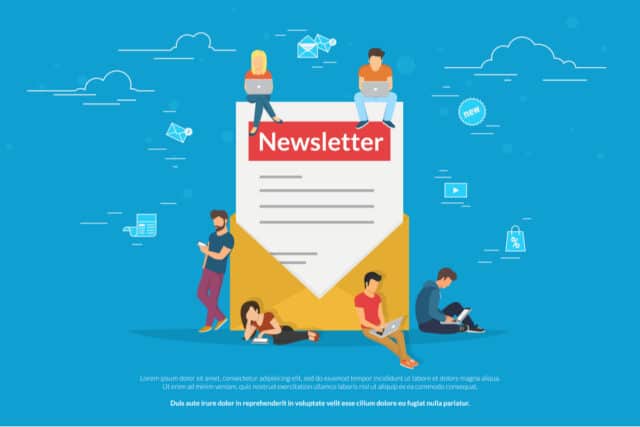
Newsletters communicate with not just new customers but existing ones too. Newsletters, by nature, discuss and educate customers on the value and prospects of your business display employee profiles, company projects, and the relevant statistics and graphics.
All this helps keep your brand on the frontier of the consumers’ consciousness.
As long as your newsletter is easy to navigate and doesn’t overwhelm the reader with information, it is the perfect tool to keep your consumers engaged and curious.
Re-engagement emails
As the name suggests, these emails are sent to reconnect with customers who have been inactive for a while.
The content can contain anything that relays goodwill and helps to re-engage naturally. Mails around holiday greetings, season changes, birthdays, and anniversaries are all types of re-engagement emails.
If the customers do not re-engage, you still benefit by getting to fine-tune your database.
Survey/feedback emails
The best way to improve your product is to take direct feedback from your customers. Hence, marketers rely on surveys to get feedback and reiterate their brand in the customers’ heads.
You can send an email to your customers with a poll or a survey to understand customer sentiment.
This will give you insights into what customers like about your brand and your products, what they would see being improved upon, and which are your favorite products.
Not only does this serve as a way for your customers to feel valued, but it also helps you make better business decisions and make changes in your marketing strategies if required. After all, a customer who feels that a company cares for them is more likely to stick to their product.
Hence, a feedback email leverages the suggestions from their customers and thus, helps you build customer loyalty.
The different kinds of emails enable you to bring diversity to your content and how you market them. They turn prospective customers into loyal ones.
Automating Email marketing
Email marketing automation means using specific triggers or actions to send out automated emails. Let’s understand with some specific use-cases:
Use Case 1: Welcome email to new subscribers
We looked at welcome emails in the list of emails above and saw how effective they can be to nudge a subscriber to make a purchase, share more information about your product, or just tell them what to expect next.

If you’re on the fence on whether a welcome email is worth it, here are some stats for you:
According to Hive.co, welcome emails have a 91.43% open rate, that’s 4x higher than most marketing emails. This is a high number, and you’re losing out if you’re not taking advantage of it.
No wonder it’s the most effective trigger email type, right after cart abandonment emails.
Use Case 2: You have items in your cart…
Here’s an interesting number for you:
Did you know that on average, 69% of all users add items to their cart but do not hit “purchase”?
A simple sequence of cart abandonment emails can really help recover these lost sales. Cart abandonment emails have a high open-rate (21%), and 50% of those emails that are opened lead to a final purchase.
This is a big potential pipeline of customers that often remains untargeted.
Since your subscribers are receiving emails that are relevant to them, they are more likely to:
- Open the email
- Re-engage with your content
For you, employing email automation translates into a loyal customer base since you are reaching out to them at the right time when they’re expecting it.
Not just that, because these are automated, they don’t result in a lot of extra effort for you. Just spend some time creating these email templates, and then leave them to your email system.
As a result, good email campaign management is critical for establishing long-term relationships with your consumers.
It provides you with tools that ensure that your marketing campaign is fully streamlined and translates into higher revenue over time.
Making email marketing work for your business
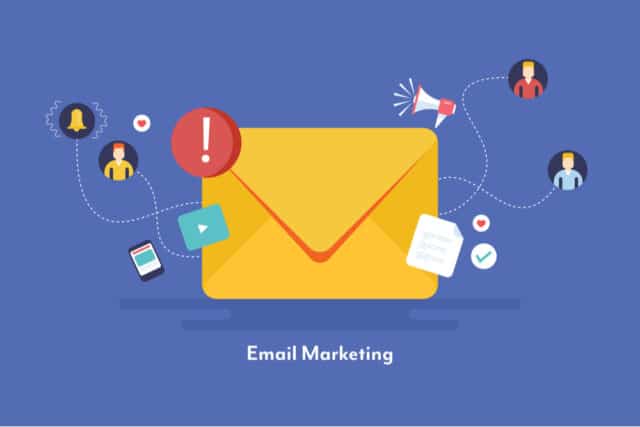
Now that you’re sold on the idea of email marketing, here’s a step-by-step guide for you to make sure you create a kickass campaign by leveraging the best email marketing tools!
Let’s continue reading:
Understand and articulate your goal
The first and foremost thing to do as part of any email marketing campaign is to understand and outline the goals you’re trying to accomplish through the campaign.
For example, if you want to upsell your services, the kind of emails that you send will be more geared towards promotional emails to existing clients.
If you’re looking to nurture prospects, your messaging and database will be completely different. If you’re sharing some recent company news with your employees, you will focus less on selling and more on information sharing.
Without articulating what you’re trying to accomplish, you can’t work on the content or the email contacts list you’re emailing to.
For clients and prospects, it’s also critical to understand them in-depth, so you can write copy that’s more compelling and targeted. It’s called identifying your buyer persona, or your ideal customer profile, their tastes and preferences, and their demographics. Their behavioral qualities will also guide you about their spending patterns.
For example, if you’re a D2C company targeting younger kids, you will keep your language simple and to the point.
Alternatively, if you’re targeting experienced marketing professionals, you will use the right jargon to build credibility and trust.
Likewise, if you’re a B2B company, your tone will be more professional and serious compared to a dating site, which would be a little casual and flirty.
Can you imagine replacing one with the other?
As part of a great content marketing strategy, your buyer persona is critical to creating messaging that is relevant to your users and feels authentic to them.
Create an email list
One of the most critical things you should remember when deciding to create email marketing campaigns is to only email people who’ve consented to those emails or have chosen to opt-in.
Since the ideal database can build or destroy a campaign, the obvious question is: how do you create one?
The safest option to build an email database is by adding opt-in forms embedded in your company website.
Let’s dive deeper:
Designing a Great Opt-in Form
This one’s a no-brainer but make sure your opt-in or sign-up forms are visually attractive. There’s nothing more unprofessional than a cluttered sign-up form with bad copy and design.
For example, this one:
This one is too long, has unnecessary white space on the left, and the call to action is too far below the fold.
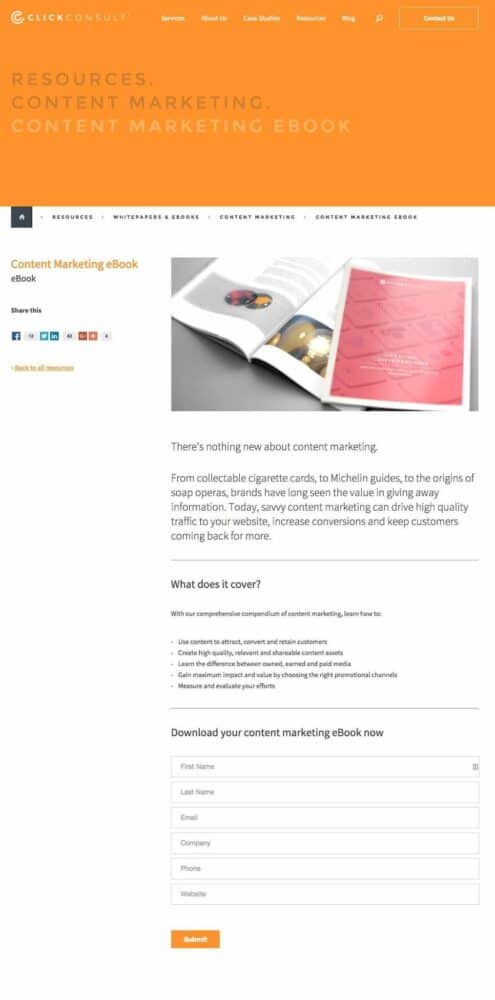
Don’t make this mistake.
Secondly, what may also make the website visitor want to fill out the form is an exciting headline that catches their attention. This can be a headline that refers to your lead magnet or its value proposition.
Obviously, a headline is not enough to make the reader sign up.
Have an interesting short description that works in tandem with the headline. Many marketers use bullet points to summarise the selling points of such an opt-in form. This helps the readers quickly glance through the key benefits.
Of course, you’d want to be cautious about the details you request from a visitor, and you should be. You may, for example, request the visitor’s name and email address. However, asking for detailed information might create additional friction for the user to fill the form and affect conversion by as much as 8-50%!
Now, you would want to conclude the overall look of the form by using a subscribe button that speaks on behalf of the user. For example, ‘I want to know more!’
Apart from this, the colors of the subscribe button should pleasantly contrast with the colors of the rest of the form. This allows for that all-important subscribe button to stand out.
Where Do I Install The Opt-In Form?
Once you are done designing the form, it is time for you to set it up on your website. The opt-in form can be set up in a variety of places.
While most marketers choose places such as a splash page or the scroll bar, opt-in forms enjoy the most success when they are part of the box that pops up when the viewer wants to leave the site. These pop-ups are designed to appear just as a visitor is about to leave a website.
Of course, some people find the exit pop-up irritating. Nevertheless, the moment your visitor leaves the site can be a valuable juncture to install the subscriber form. This is because there can be a possibility that the client has gone through your website and has found some interesting products.
Data has shown us that opt-ins are helpful, placed anywhere around the site; they are known to increase visitor conversion rates by as much as 125% when used as an exit pop-up!
The Magnet That Leads
We have learned about how to design opt-ins for your website. Yet, if it weren’t for lead magnets, most opt-ins would collect far fewer emails.
Leads magnets are basically marketing bribes that are given to people for filling up the opt-ins. This can be in the form of white paper, eBooks, vouchers, coupons, free consultation sessions, quizzes, self-assessment tools, webinars, and other things.
With a lead magnet, you are offering the subscribers of your emails something in return for sign-up to receive them. Again, how do you choose which material to use as a lead magnet?
First of all, it should be relevant content for the visitor. Lead magnets always work out if they are offering something relevant for the website visitor.
Secondly, it must be something that readers can implement easily. You can talk about actions, methods, or skills that can be easily achievable from the information given in lead magnets.
Lastly, your lead magnet should be available as soon as the opt-ins are filled.
It also helps immensely if the content is something that email receivers can read in a few minutes.
This is a slow and sometimes frustrating method to grow your email list but will ensure high loyalty and readership.
Say No To Readymade Email Lists
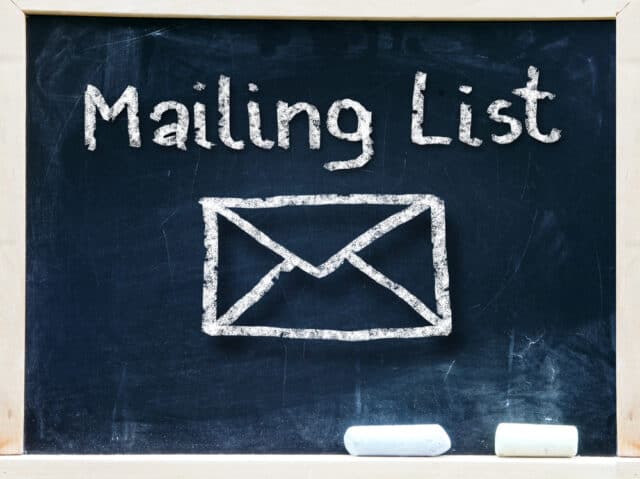
While you might think that building a list of emails from scratch is tedious, it is easily the safest thing to do. Many companies, to gain a head start, purchase lists. This is really harmful.
The email ids in the purchased email lists often do not have consent from their owners to receive marketing emails. With current laws like GDPR and the CAN-SPAM Act, this is highly illegal. If caught, you can be easily charged with a severe cyber offense.
Also, most of these purchased lists have low click-through rates, and emails sent to them end up in spam folders with a high unsubscribe rate. This leads to a bad reputation low domain authority, and can often get your email ID blacklisted, which can severely impact business.
Verify your list is accurate
Despite trying everything to increase your email open rates and engagement rates, you can still struggle. But, perhaps the problem doesn’t lie with your content or design or even the frequency at which you send your emails.
Instead, it may just be in your email list!
Any email marketing campaign has the problem of email databases that grow old. Sometimes you may have university emails that don’t get checked very frequently as a student graduates. Or someone might have switched email clients or even corporate emails that cease to exist once the user is no longer with the organization.
In order to optimize your email marketing efforts, it is recommended to clean up your email list frequently to clear out spam and invalid emails. This will help make sure your analytics is healthy and accurate, and you don’t waste precious credits trying to reach out to defunct emails.
However, verifying the validity of all these emails in your list can be a tedious job and practically impossible to do manually. This is where an email validation software tool comes into use.
The job of an email validation software tool is to identify which emails are valid and which are not. This results in a database that has an increased probability of reaching out to more relevant people.
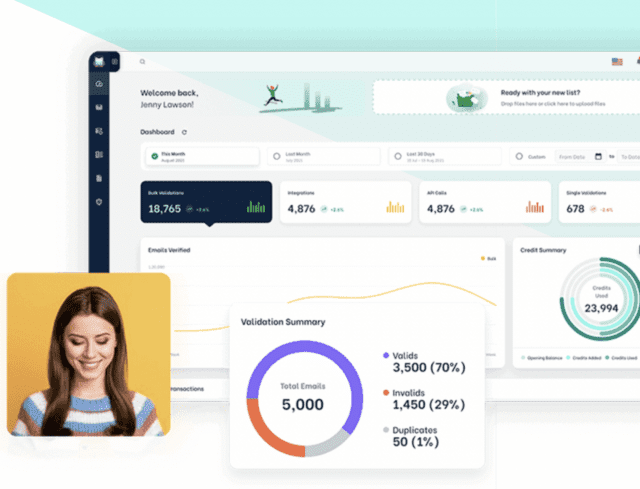
Email validation services such as TuxMailer work systematically by running multiple tests to determine whether an email is valid or not.
The first of these tests determines whether the email registered has the format that matches the general email syntax. This eliminates a lot of fake email accounts and emails.
For example, if all email addresses at yourdomain.com are in the format of firstname.lastname@yourdomain.com, and you know the first name and the last name of the person you’re trying to contact, it’s easy to conclude that your contact’s email address will follow the same naming convention.
Email validation services also check whether the attached email address has a registration with that particular domain site. This takes out those emails that have the correct syntax but are not valid.
Additionally, email validation software can conduct checks on how active these emails are. Thus, even those emails that were once functional parts of your campaign are checked following a period of inactivity.
However, the question arises of how you should integrate an Email Validation Software like TuxMailer into your email marketing campaign alongside an email service provider. There are two approaches that can be used in this case.
An intelligent route to take for your integration is to run real-time checks. This is how you can run checks while someone is entering their email address in real-time.
The company can easily program this check into the opt-ins. Such an integration saves time and cost for a company as there’s no opportunity for the database to receive wrong emails.
While this step is helpful when taking new entries into the database containing all your subscribers’ emails, we must undertake a different process to sort out the already existing list.
The process we are talking about is batch verification. Many email validation providers have features that give the users a chance to verify their database in bulk.
This is extremely important as the report generated from this validation can weed out inactive and fake emails.
We’ve got you covered if you are intrigued by the idea of an automated email list cleaning for your business to run effective campaigns but are wondering how it translates into monetary terms.
There are two ways email validation providers charge companies for their services.
- The first way for using these services is by using the policy of pay-as-you-go. This means that you can pay for the service of email validation providers only as you use them.
- The other way is by having a recurring subscription that doesn’t limit the usage that you may have within the specific period.
While there are merits and demerits of both these systems, it is up to you to decide how you would want to utilize your company’s resources. Either way, email validation software is essential in protecting domain reputation and saving the cost of sending an email to a wrong, inactive or fake email address.
Segment your database
Once you have enough emails within the email list, it is essential to segment email recipients into groups based on their demographics, behavior, or other common relevant activity patterns. This is very helpful if you want to send emails that are targeted towards particular choices and preferences.
A simple method to do it is by asking the user for the type of content they would want to see while filling out the opt-in forms.
You can then send personalized and targeted emails to each target group based on a lot of defining characteristics such as their gender, location, age, geography, etc. This opens up space for targeting messaging, thereby leading to higher conversion click-through and rates.
Finalizing email service provider
This is a critical process for running email campaigns. Email service providers or email marketing platforms are integral to an email campaign.
Choosing the most suitable ESP depends on various factors, such as your budget, volume of emails, and how large your list is.
Let’s imagine you need to send out some eye-catching emails. Many ESPs provide intuitive email editors with lots of pre-loaded email templates, while others offer HTML editors that need more effort to start.
Do keep in mind that you can’t use regular email clients like Gmail or Yahoo for campaign management because this will get you flagged as spam and may even get your account disabled.
As far as costs of ESPs are concerned, there is quite a debate between pricing based on email volume vs. pricing based on total subscribers. Interestingly, newer ESPs are coming up with a policy of charging their users’ total volume of emails.
Writing effective emails
You must have realized by now that just building a list and enrolling the help of an ESP isn’t enough for effective email marketing campaigns with strong ROI.
You also need to have stellar content that incentivizes the recipient to open the mail and compels them to engage with your brand.
Here are some tips you should keep in mind while crafting your email:
A great subject line
Let us begin with your email subject line. The email subject line is, quite naturally, the part of your campaign that summarises the purpose of such an email. So, what should an ideal subject line have, and how to write one?
Making your subject line unique is crucial for any email campaign. To do so, you ought to make the subject line short with just the necessary information to catch the curiosity of an average reader.
Other than this, it always helps to add numbers to a subject line. Also, the tone you use for your subject line is important. We suggest you use an informal, cheerful, and friendly tone.
A subject line as simple as “Can I make your life 10% easier?” is bound to work wonders. It instantly communicates to the viewer that reading this email will help them.
One method to appeal to recipients, especially those belonging to a younger age group, is by using trending language.
Take a cue from this email subject line from Really Good Emails: “Drooling over email designs 🤤.” Not only does it use internet language popular with millennials and Gen Z, but it also uses an emoji, which is a sure-shot way of grabbing attention.
How To Write To Friends
Unless your brand voice is markedly different, discard the invisible line that divides the consumer and your company, and write content for them in the manner you would write something for a friend.
Include some humor in your copy, but never at the cost of information. Understand what kind of news or announcement you are gunning for and use suitable tones for that.
The other advice that helps content writers write such copies is to write to just one person and one person only. This becomes far more effective in getting your content points across to recipients.
The Personal Touch
Again, when replying to emails or engaging in direct contact with any customer, you must write messages that have a personalized tone in order to increase the efficiency of your email as a marketing tool. Even when you start an email by greeting the client with their name, they will appreciate that little attention to detail.
This personal touch will build a better client relationship and has a crucial role to play in turning prospects into customers within the sales funnel.
Apart from having great, engaging content, ensure that it is in accordance with the CAN-SPAM Act.
Some of these include including your postal address in the email, giving the recipients the option to opt-out of receiving emails, and making sure your headline and preview text are honest and authentic.
Have multiple copy options for A/B testing
Once you are done with setting these things up, it is vital that you run A/B tests for a few of your top choices, so you end up with the most effective copy, subject, or design.
After the campaign is up and going, the A/B tests can then be used. For example, you can test to see which day and which part of that particular day results in better user engagement.
Usually, Tuesdays, Wednesdays, and Thursdays enjoy more engagement than the weekends. We can explain this easily.
Mondays are the start of a busy work week. Hence, no one is inclined towards reading marketing emails.
Fridays are the prelude to weekends, and again, no one really has time to read your emails.
As for weekends, it is that time of the week when consumers spend quality time with their friends and family. So you shouldn’t disturb them during that period.
Thus, the time period between Tuesdays and Thursdays becomes the ideal time to send emails.
To determine which part of a day gives you better engagement, you have to test various time slots.
You should also have a dedicated team of fresh eyes who will proofread the test email and give feedback.
Design and develop as per best practices
Designing and developing emails in line with best practices can go a long way towards ensuring that your target audience is opening your emails and engaging with them.
The main thing to be really aware of while designing emails is that they should be simple, fast to load, and responsive on different screens.
Make sure that the design of the email is as per best practices; it should have preview text, strong infographics, and alt text in case the images don’t load.
Similarly, a footer, often providing an unsubscribe link to the customers from receiving future emails, is an essential element of email design.
Additionally, you must ensure that email communicates your brand value effectively to the customer. In general, email viewers prefer clean and clear designs that are not cumbersome to read.
Therefore, even during designing, it is important not to overthink and go for designs with a simple layout not containing too many images.
Email design, when developed keeping in mind user experience, leads to clean, clutter-free emails that increases the chances of customer engagement.
After the design team appropriately designs the email, coding limitations should also be accounted for. This coded email should be attention-grabbing across devices. Make sure the design team follows the rules laid down by the CAN-SPAM act while designing the email.
After all, nothing works better than an email that looks organized, has a ton of white space, is visually appealing, and communicates the CTA to the customers!
Test your email marketing campaigns for responsiveness across devices

We are going through the age of smartphones, smartwatches, and tabs. As per current statistics, two-thirds of people access their emails on their smartphones.
Thus, it would help if you optimized any email marketing campaign suitably for smartphones. Good ESPs will build in a feature for mobile responsiveness.
Obviously, a clean design helps but keep in mind to customize the call-to-action button. A large and prominent call-to-action will help in gaining more engagement from recipients of that email.
Send out that email marketing campaign
Every email is better than the one that never gets sent.
Once you’ve validated your email list through email validation software, and have written the most effective copy, kept in mind best practices and buyer persona, and have tested different variations using A/B testing, all that’s left to do is send that email to the customers on your list.
By employing email marketing software, using email validation, and making use of the best email marketing service, you should finally have on your hands automated emails that you can start deploying.
It’s that simple!
Monitor analytics to improve your next email marketing campaign!
Once you’ve successfully curated your email list and ensured that it is growing organically, it is crucial to observe the campaign performance in terms of response to content and run a successful email marketing campaign.
You should keep a measure of opens and click-throughs as they directly indicate how successful your campaign is and compare them to industry standards. This would help you build future campaigns.
The goal is to increase traffic on your website, so an increase in those numbers is a direct growth indicator.
You can track your results through tools that allow real-time tracking to see what is happening with your emails and who is opening or clicking on your emails and who isn’t.
Conclusion
Email is by no means a new technological discovery. It was discovered as long as 1971 ago, but it still remains a widely used communication channel despite having been around for almost 50 years. For this reason, it is also touted as the best channel in B2B marketing.
With email marketing poised to play such an important role in the future of digital marketing, we hope we were able to provide an easy breakdown of the processes attached to it, such as the element and importance of email validation.
Therefore, not including email marketing in your marketing arsenal will mean missing out on golden opportunities for customer acquisition, engagement, and retention.
But, again, there is no one rule to fit all, so try out different email marketing strategies to see which one fits you the best!
Subscribe to our Newsletter
Sign up to receive email updates on new product announcements, exclusive sales and marketing content, special offers on email validation plans, and more.
We send curated content as per your preference and do not indulge in spam!
What would you like to know about
We’re committed to your privacy. TuxMailer uses the information you provide to us to contact you about our relevant content, products, and services. You may unsubscribe from these communications at any time. For more information, check out our privacy policy.
